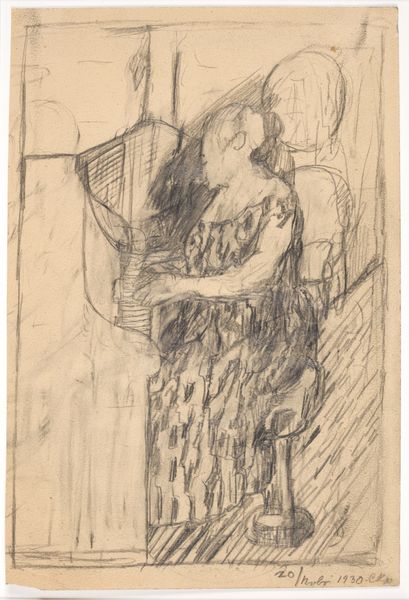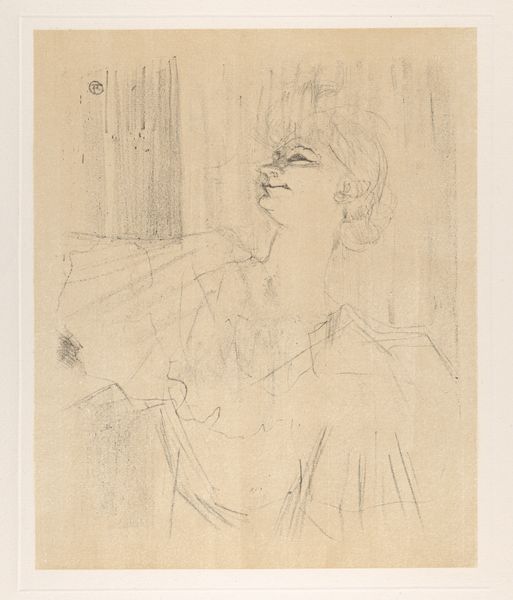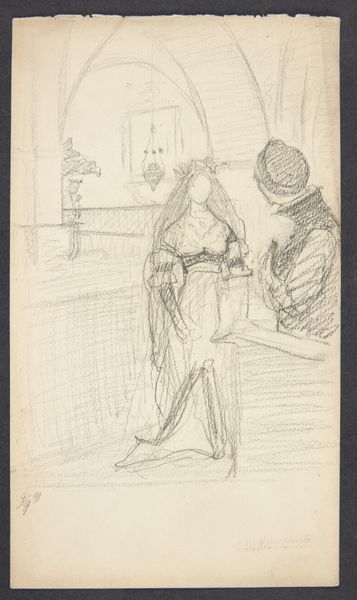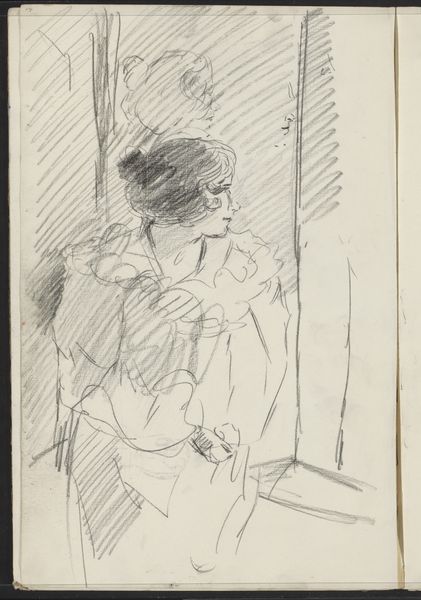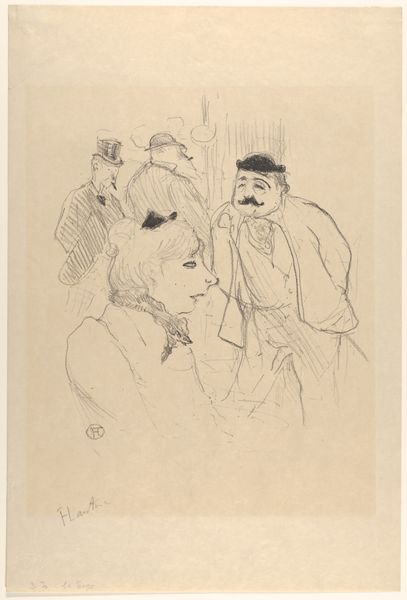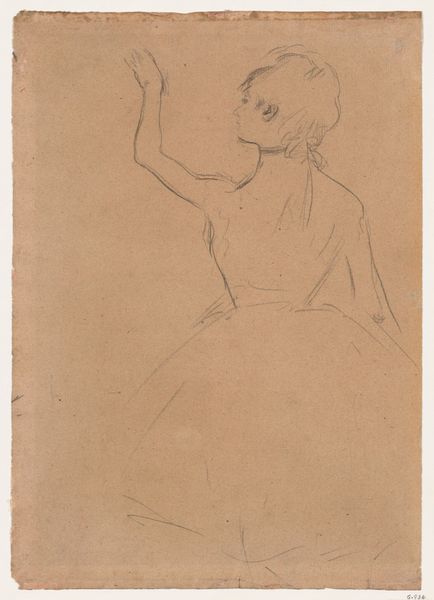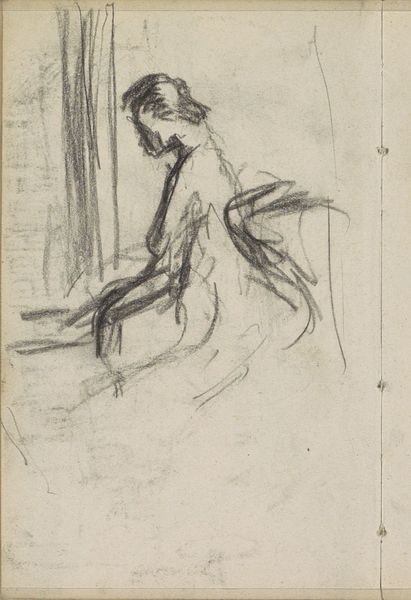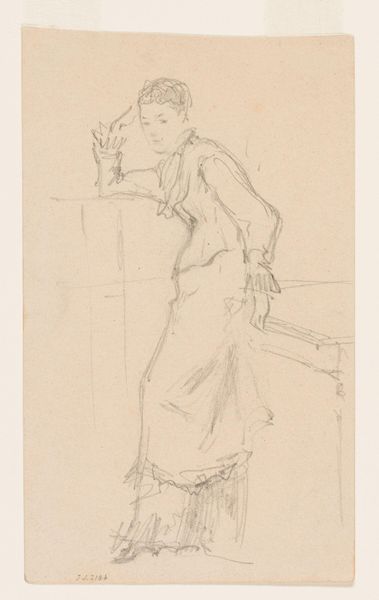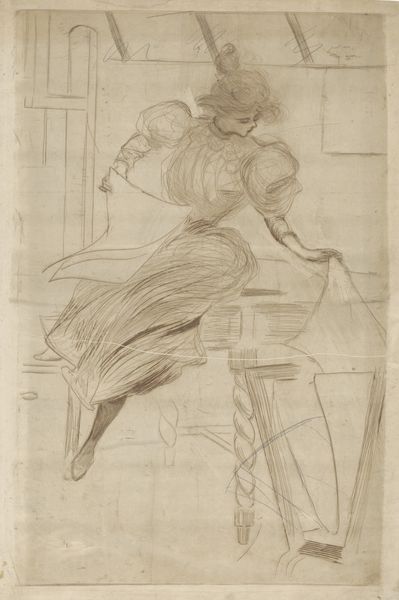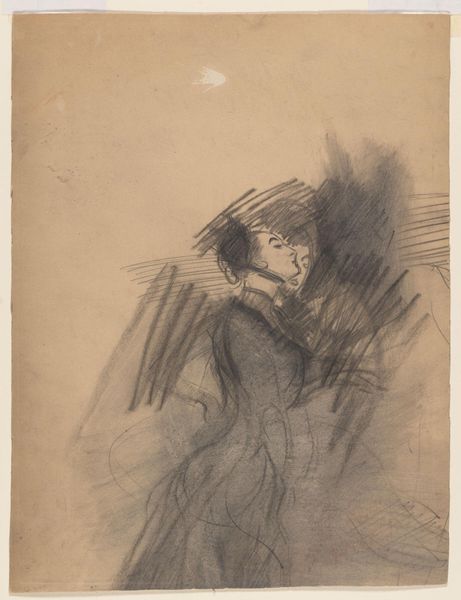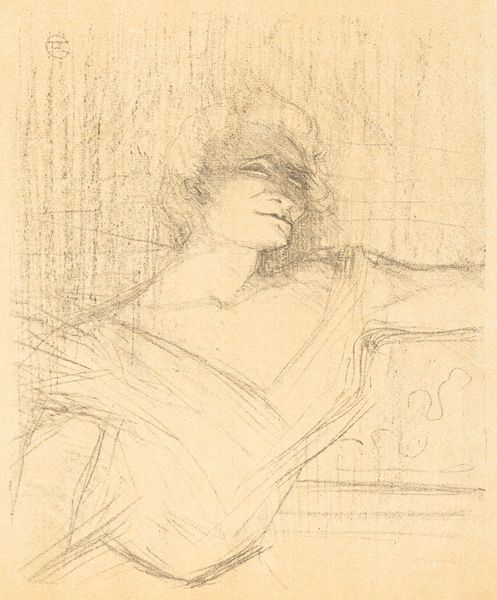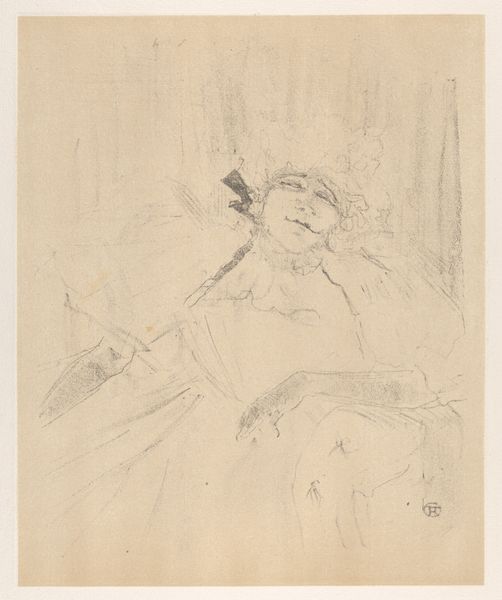
Dimensions: 19-5/8 x 14-7/8 in. (49.8 x 37.8 cm)
Copyright: Public Domain
Editor: Here we have Toulouse-Lautrec's "I. Sur la Scène" from 1898, a lithograph in pencil and crayon. There's such a sense of immediacy to it, like a quick sketch capturing a fleeting moment. What do you see in this piece? Curator: The sketch-like quality, as you observed, belies its complexity. Lautrec masterfully employs line and shadow to convey the cultural nuances of Parisian nightlife. Consider the central figure. Her upward gaze speaks volumes. Is it defiance? Longing? Discontent? The symbol of the upward gaze itself echoes through religious art across millennia. Editor: That's interesting, I hadn't thought of it in terms of those grand themes. Curator: Indeed. Notice, too, how her dress slips off her shoulder, and consider how this echos in mythology: revealing just a touch of flesh was frequently code for the hidden depths. Are we glimpsing her vulnerability, or her willingness to use it? Now, look at the man on the left. What do you think his figure represents? Editor: Perhaps an admirer... or maybe something less benign? There is something unsettling about him lurking in the shadows. Curator: Precisely! Lautrec understood the power of suggestion, of what's *not* explicitly shown. His art, much like Japanese Ukiyo-e prints, uses these kinds of symbolic compositions and representations to evoke emotions and hidden narratives within the social milieu of fin-de-siècle Paris. This sketch captures a coded story far deeper than just a portrait on the stage. Editor: It makes me appreciate how symbols that repeat throughout time continue to impact our subconscious. Thanks for showing me all the embedded symbols. Curator: Indeed, it shows us how history, culture, and psychology become inextricably linked within the visual language of art.
Comments
No comments
Be the first to comment and join the conversation on the ultimate creative platform.

